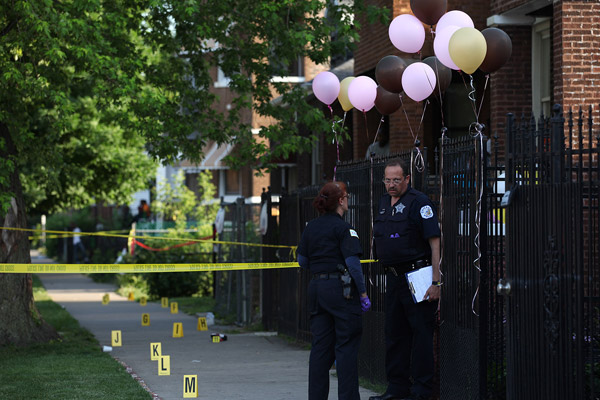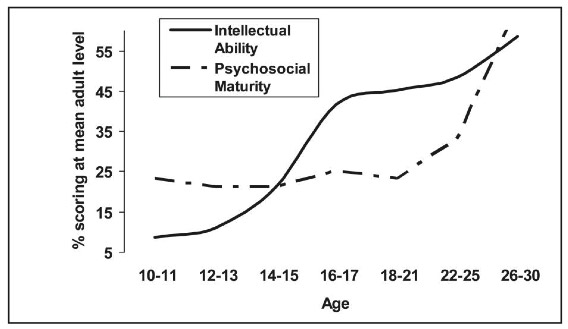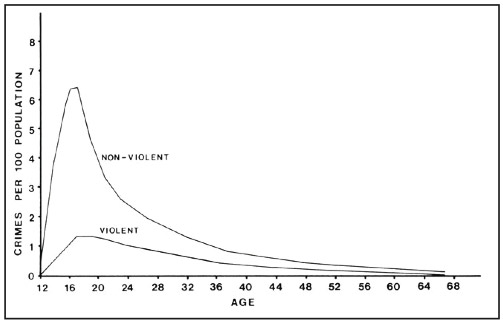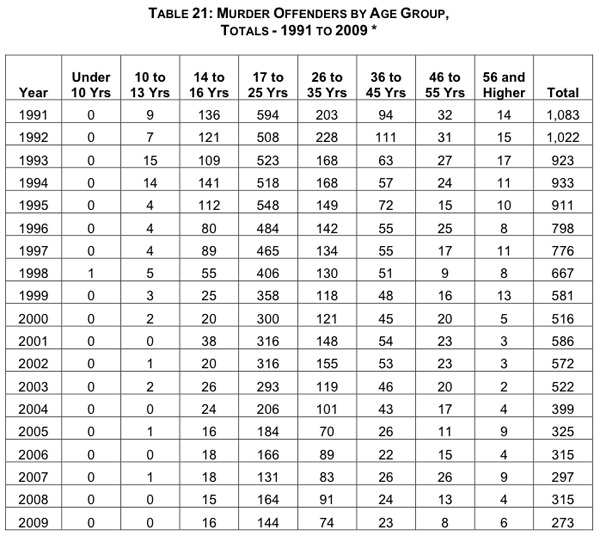
Chicago police officers investigate a crime scene at 51st and May Streets where two people were shot and killed next to a house where people were celebrating a high school prom, Friday June 8, 2012
Via Capitol Fax, the Illinois Juvenile Justice Commission just produced a report (PDF) arguing that the state should stop automatically treating 17-year-olds with felony charges as adults, which is uncommon among U.S. states. It's something the Chicago Reporter's Angela Caputo covered well late last year (building on the commission's work):
In 2009, the latest year for which data are available, the number of 17-year-olds arrested on potential felony charges in Chicago—6,133 in all—not only trumped all major cities across the country, but nearly equaled the combined total of three cities with the next highest records: Los Angeles, Houston and Philadelphia. New York’s police department didn’t report its arrest data to the U.S. Bureau of Justice Statistics that year.
[snip]
On average, between 2007 and 2010, the number of 17-year-olds convicted of a felony was about 772. Then, in 2010, an Illinois law that moved misdemeanor cases back to the juvenile courts went into effect. The following year, the number of convictions shot up by 16.7 percent to 907.
So not only are we in a place where an unusual number of 17-year-olds are arrested on felony charges, those teens are automatically charged as adults—and convictions have spiked since the misdemeanor cases were sent back to juvie court.
The commission's argument is predicated, in part, on the idea that 17-year-olds are still children, not just by most measures of the law, but psychologically as well.

That part where intellectual ability wildly outpaces psychosocial maturity? That's the adolescent know-it-all gap.
It's based on the work of Laurence Steinberg, who's long been an advocate for dealing differently with adolescents in the criminal justice system: "in our studies, we’ve shown that there is a kind of normative decline in sensation-seeking after middle adolescence. A lot of adolescent crime is driven by thrill-seeking."
The commission matches Steinberg's work up with a study of juvenile offenders, and Farrington's age-crime curve:

Which looks a lot like the age of murder offenders in Chicago over the years as well (PDF):

Photograph: Chicago Tribune


